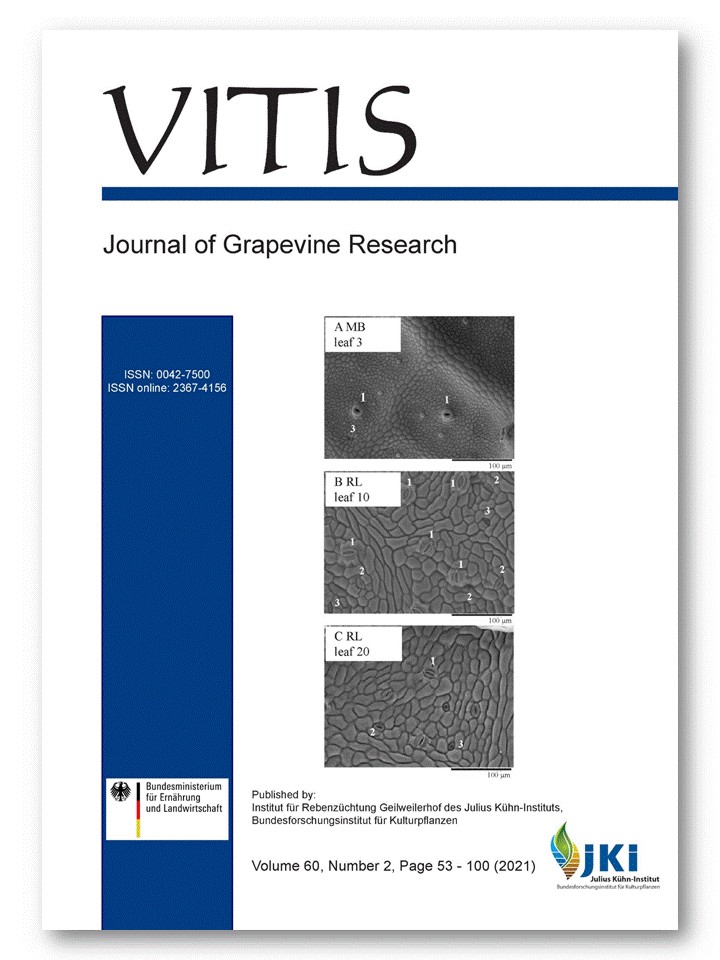Leaves of more cold hardy grapes have a higher density of small, sunken stomata
DOI:
https://doi.org/10.5073/vitis.2021.60.63-67Abstract
Leaf stomatal density, index and size are known to be affected by the growing conditions, presumably to provide a better function for plant development. The question was whether there is a difference in stomatal parameters between grape species with different cold hardiness: V. riparia and V. vinifera; and the V. vinifera cultivars 'Riesling', 'Chardonnay', 'Sauvignon Blanc' and 'Merlot'. Analysis by scanning electron microscopy allowed the observation of 3 types of stomata in developing and mature leaves of all examined grape leaves. Stomatal parameters were found to be significantly affected by species or cultivar and growing conditions but not rootstock. A higher stomatal density and index were determined for the more cold hardy V. riparia and V. vinifera 'Riesling', whereby the higher number of stomata in 'Riesling' was found to be due to a higher number of small, sunken stomata. These findings might indicate a strategy of grape plants to optimize growth under low temperatures by using fast-acting stomata whose gas and water exchange are less affected than for larger stomata.
Downloads
Additional Files
Published
Issue
Section
License
Copyright (c) 2021 The Author(s)

This work is licensed under a Creative Commons Attribution 4.0 International License.
The content of VITIS is published under a Creative Commons Attribution 4.0 license. Any user is free to share and adapt (remix, transform, build upon) the content as long as the original publication is attributed (authors, title, year, journal, issue, pages) and any changes to the original are clearly labeled. We do not prohibit or charge a fee for reuse of published content. The use of general descriptive names, trade names, trademarks, and so forth in any publication herein, even if not specifically indicated, does not imply that these names are not protected by the relevant laws and regulations. The submitting author agrees to these terms on behalf of all co-authors when submitting a manuscript. Please be aware that this license cannot be revoked. All authors retain the copyright on their work and are able to enter into separate, additional contractual arrangements.



